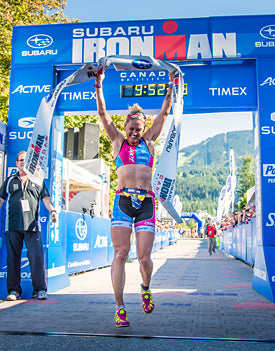Ironman Triathlon Training: What You Need For A Successful Race

What is an Ironman?
Triathlon consists of swimming, biking and running - sounds simple if you put it like that. There are generally four different categories (distances) of triathlons: sprint, olympic, half-ironman and full-ironman. Arguably the toughest endurance race is the full-ironman; consisting of a 2.4-mile swim, 112-mile bike and 26.2-mile (marathon) run, back-to-back-to-back, in one day.
The term "Ironman" was actually coined back in the 70s from a dispute between military officers over which athlete—the swimmer, biker, or runner—was toughest. The first Ironman race took place on the island of O'ahu and saw fifteen men start the race with twelve of them completing the inaugural event. Since then, it has grown into a nationally televised event with 3500 participants, and dubbed the IRONMAN World Championship, held annually in Kailua-Kona, Hawaii.
It's a Marathon, Not a Sprint
For an event that takes nearly a whole day to complete (the swim kicks off at 7 a.m. with a midnight last call to finish the run), training for the Ironman requires a strict regimen and serious time commitment. It takes a minimum of 13 hours of training per week to get in shape for an Ironman race. That means you'll be training almost every day of the week.
After all, you not only have to swim, bike and run during the race, but you have to beat the cutoff times (swim: 2hrs 20mins, bike: 10hrs 30mins, run: course closes at midnight), and finish in 17 hours.
It's recommended to begin your training as early as possible, generally 6-7 months ahead of your race date. Hiring a coach who can tailor a specific training program to your fitness level is best but many standard training programs can be found online.

The Fourth Discipline Of Triathlon Training: Nutrition
You know that a triathlon of any length consists of a swim, bike and run, but in order to succeed at the full-Ironman distance you'll have to learn a fourth discipline: nutrition.
To say an Ironman triathlon takes a lot of energy is an understatement. In fact, athletes burn around 7,000 to 10,000 calories during those grueling 140.6 miles.
Unlike the sprint or Olympic distance triathlon, the half- and full-ironman becomes not only about how fast you can swim, bike and run, but just as importantly, how you can take in enough calories to keep from bonking or hitting the wall.
Training While Practicing Proper Fueling and Hydration
Practicing your fueling and hydration strategy is equally as important as training for the swim, bike and run legs of the race. To ensure you have an enjoyable race and cross the finish line, it's important for endurance athletes to focus on consuming the proper amounts of calories and replenish electrolytes that contains essential trace minerals that help regulate blood volume and maintain proper brain function during endurance training and racing.
Also in Blog

The Impact Of Dehydration On Performance
Dehydration Results In Lower Blood Pressure And Slows Bodily Processes. Active individuals should be aware of the acute effects of dehydration on performance. With just a 2% loss of water in the body, heat regulation becomes impacted. With a 3% drop in body weight from water loss, muscle cell contraction is impacted. And at 4% loss, there is 5-10% reduction in overall performance that can last up to 4 hours.

How To Survive The Heat and Humidity

Dropping Unnecessary Sugars In Your Sports Drink Is Easy
We need to hydrate. But how can you hydrate and replace electrolytes without the harmful additives like sweeteners and artificial flavoring common in sports drinks that are harsh on your stomach?
